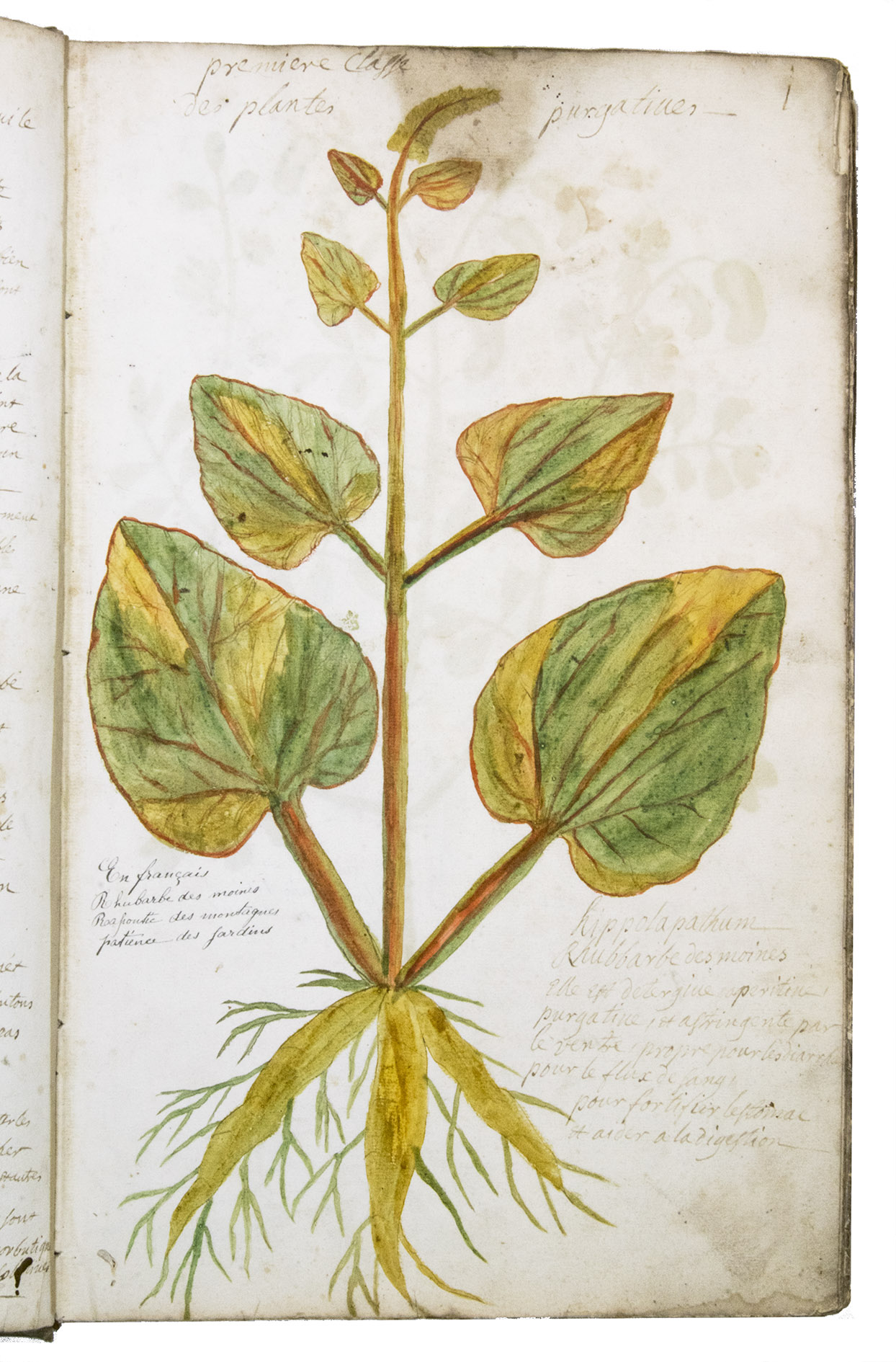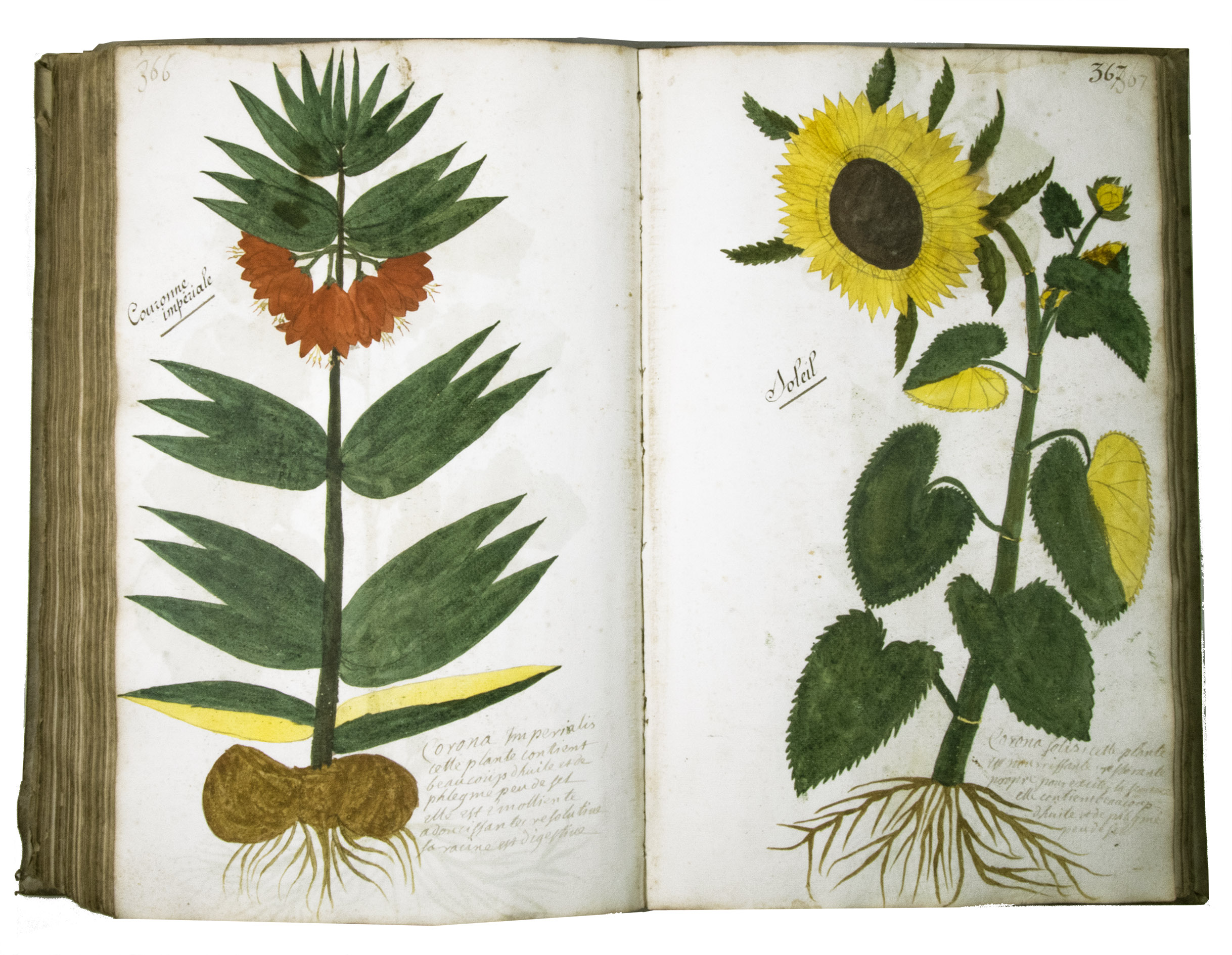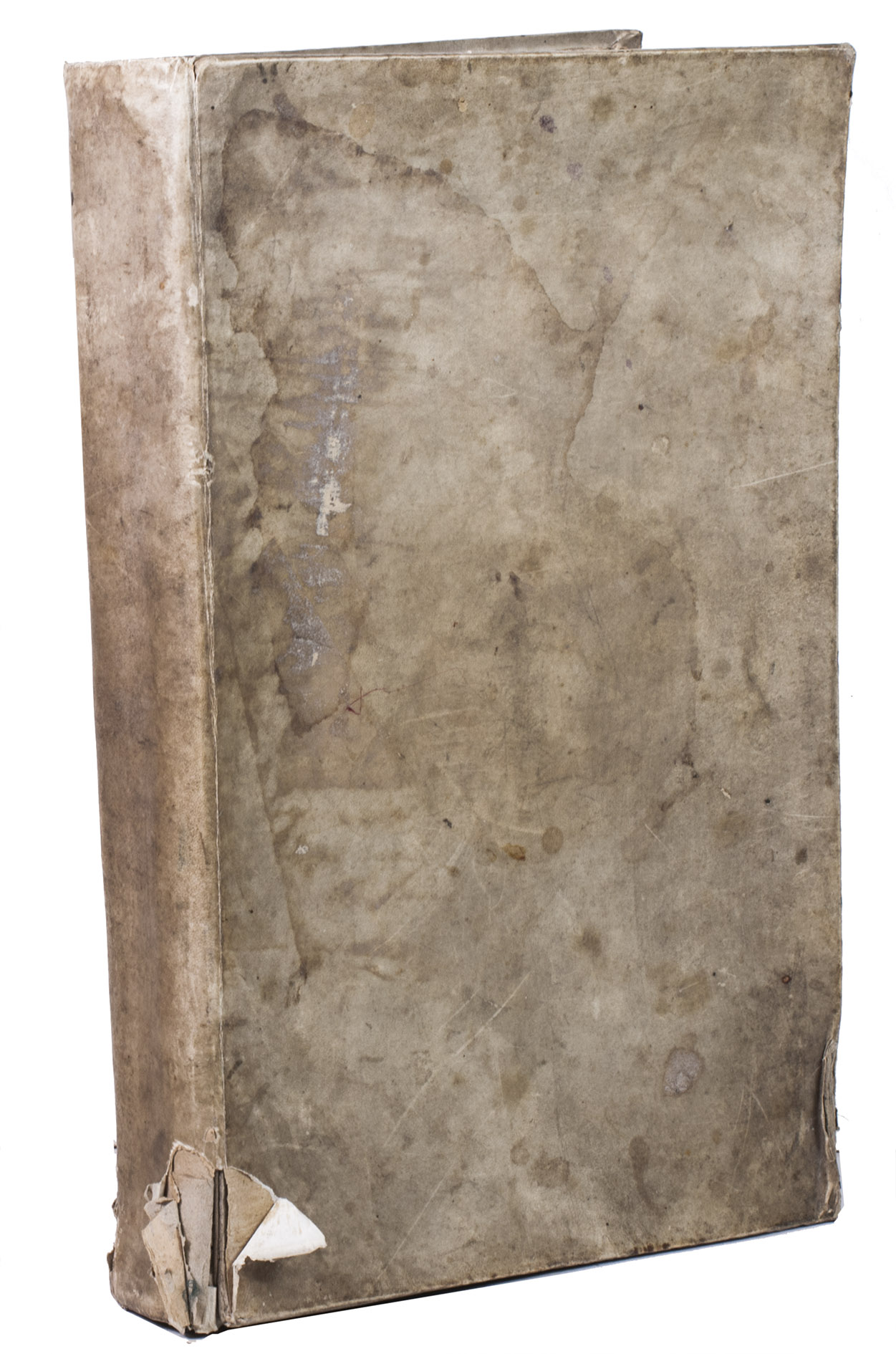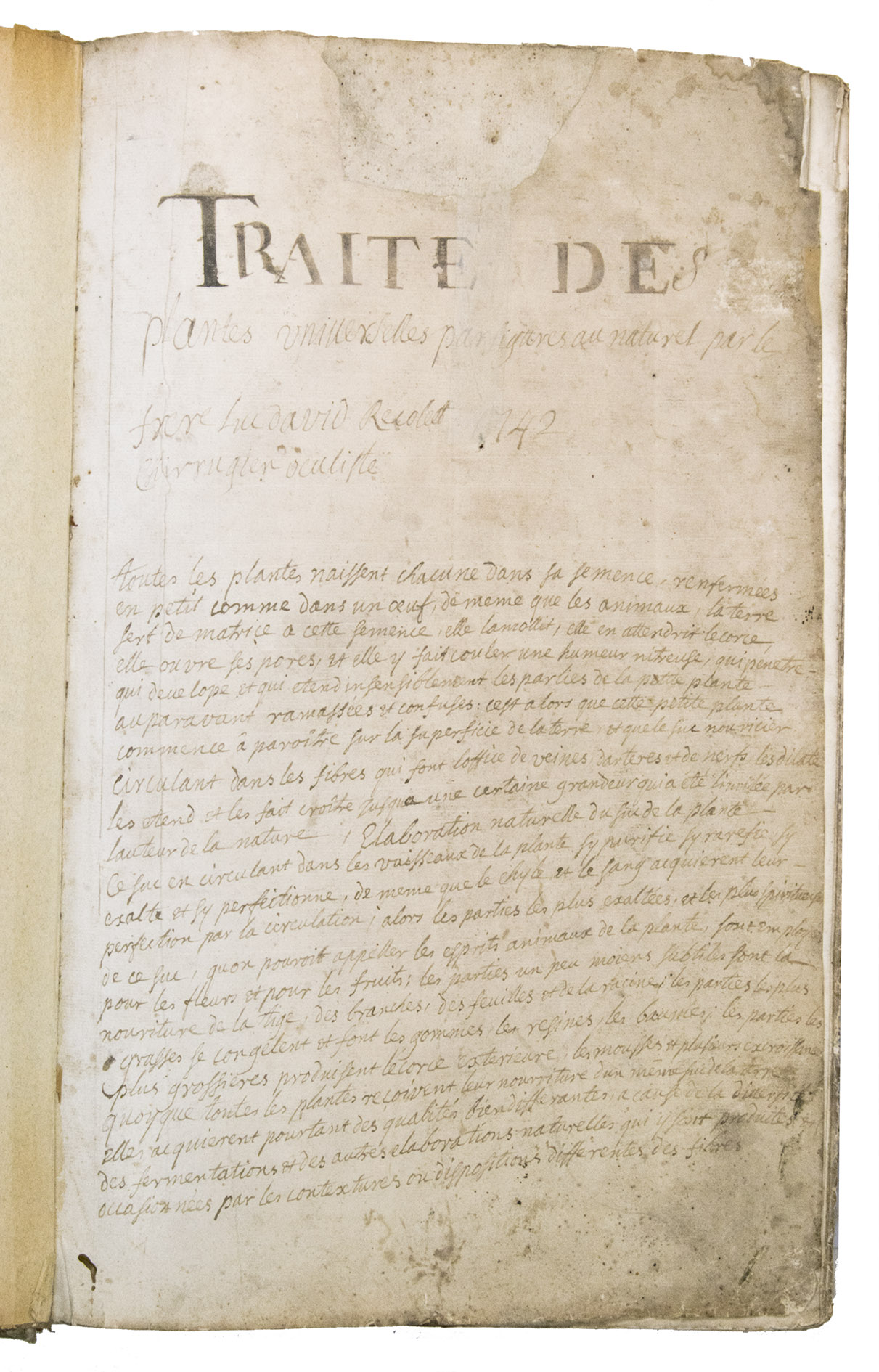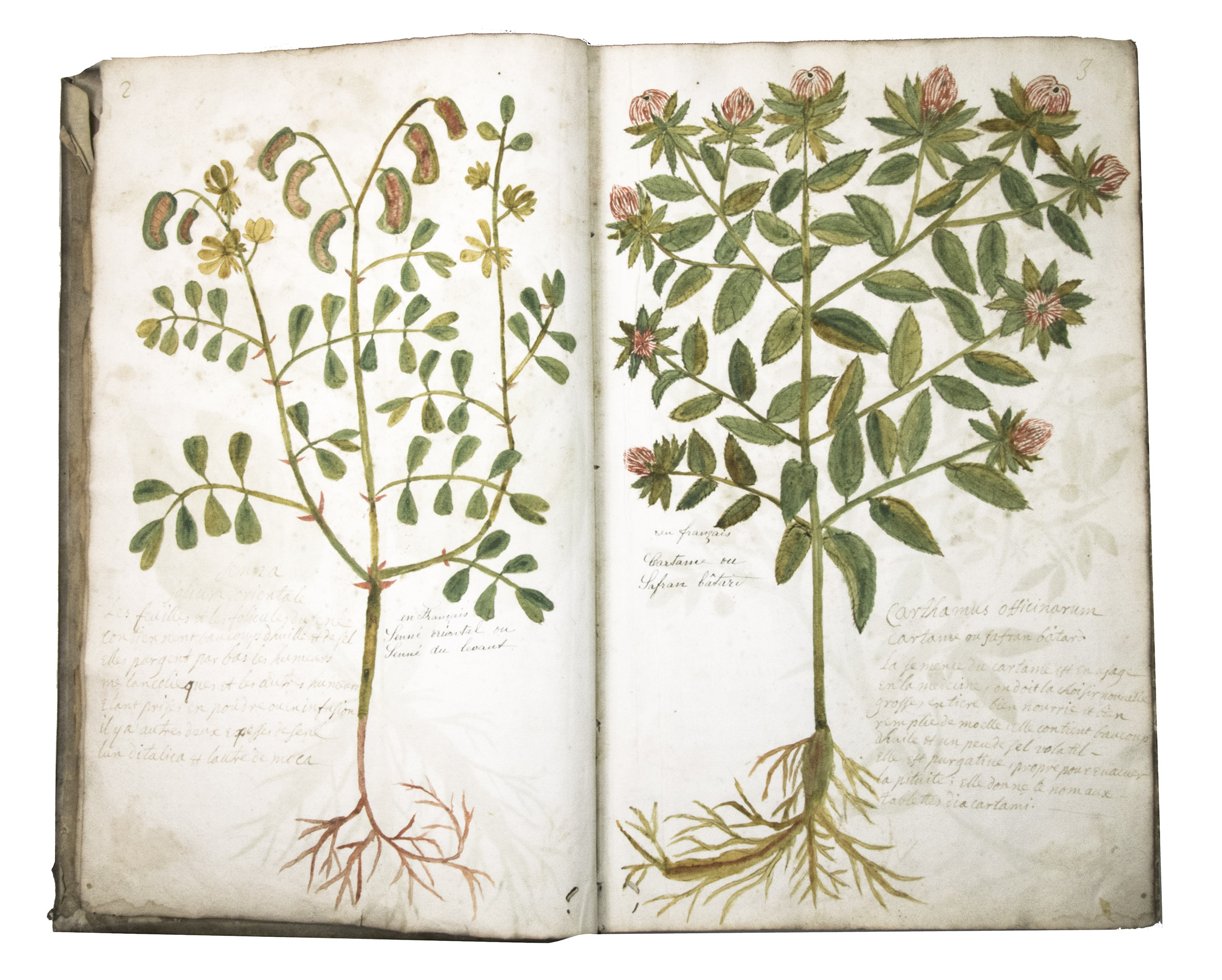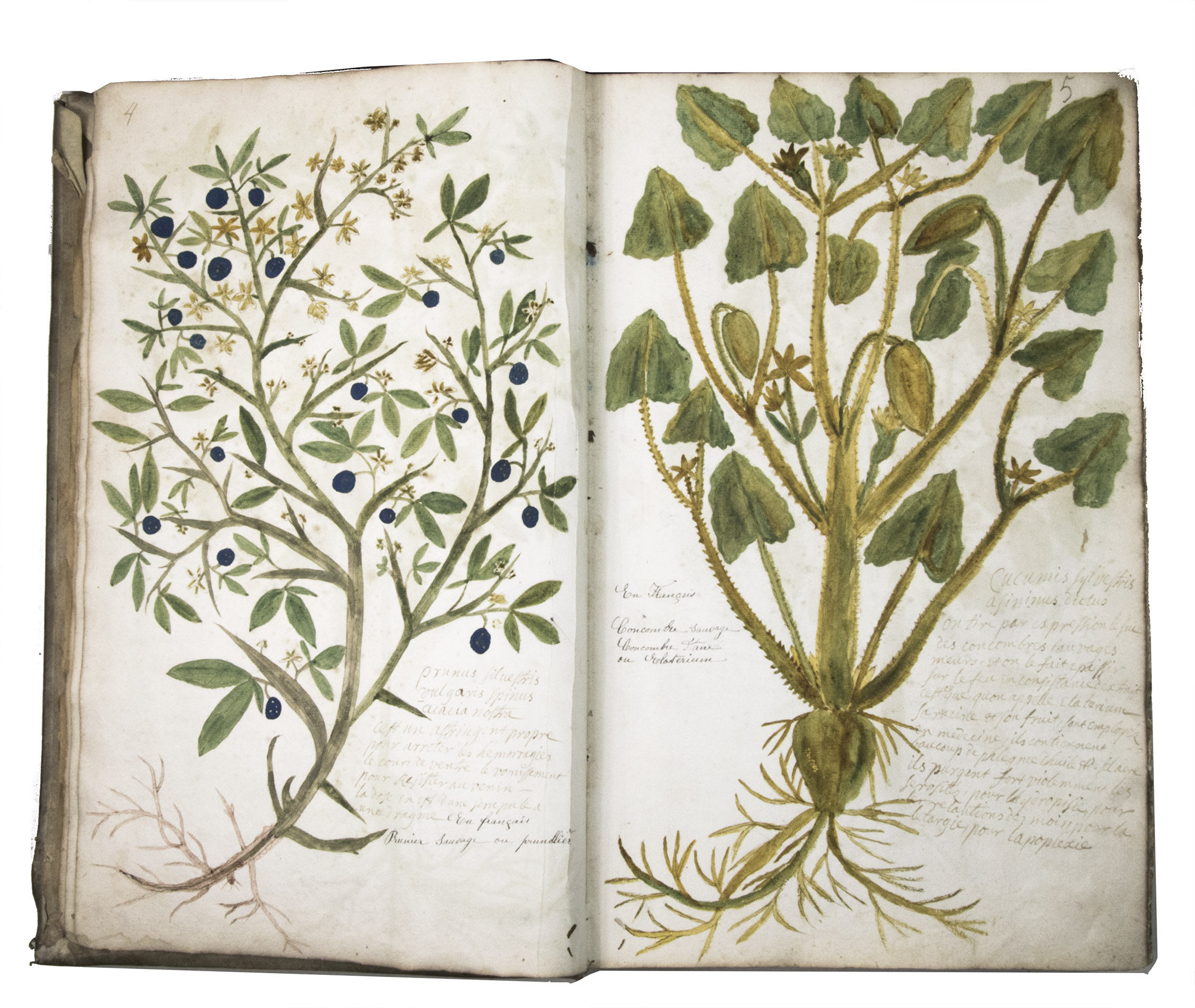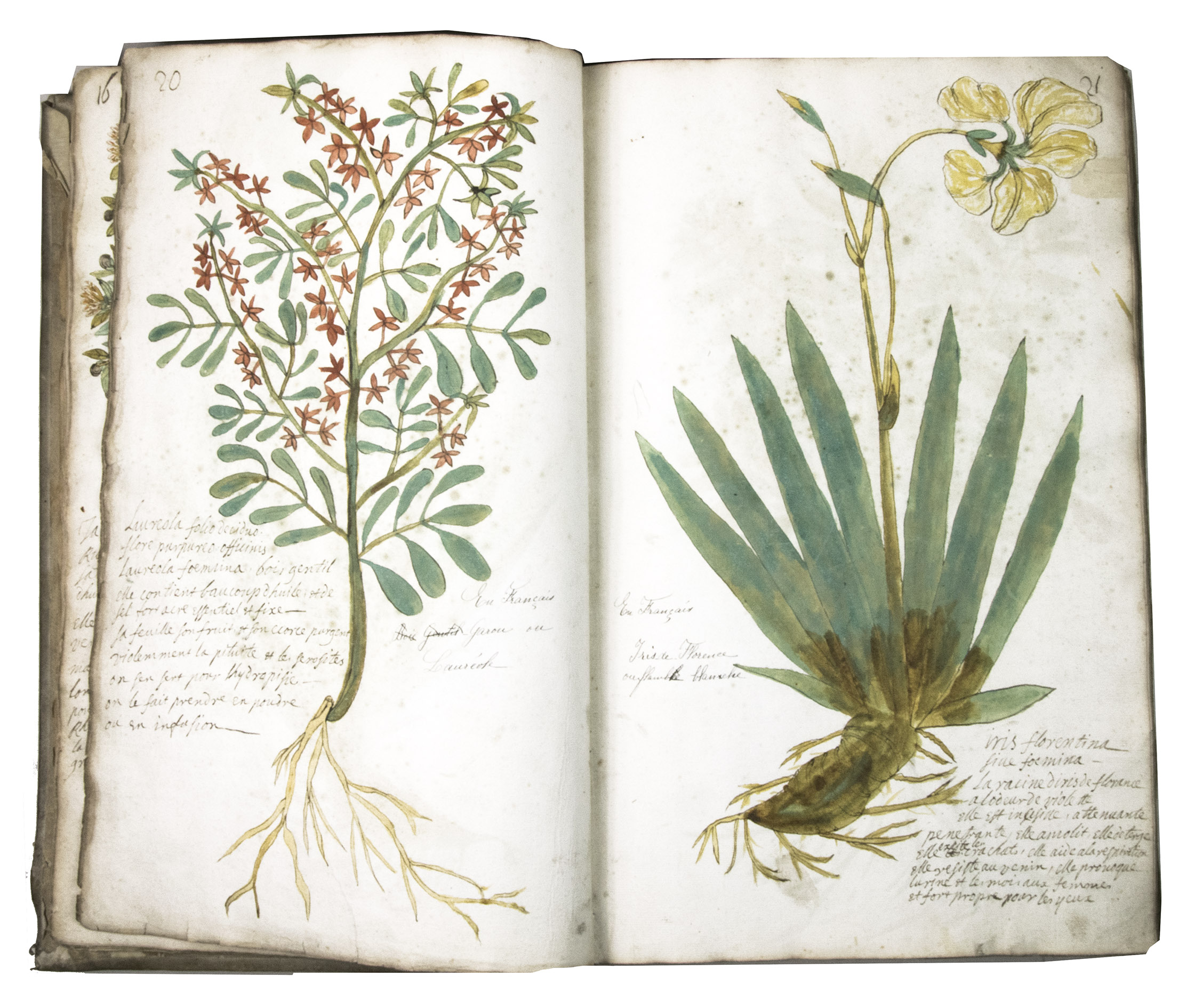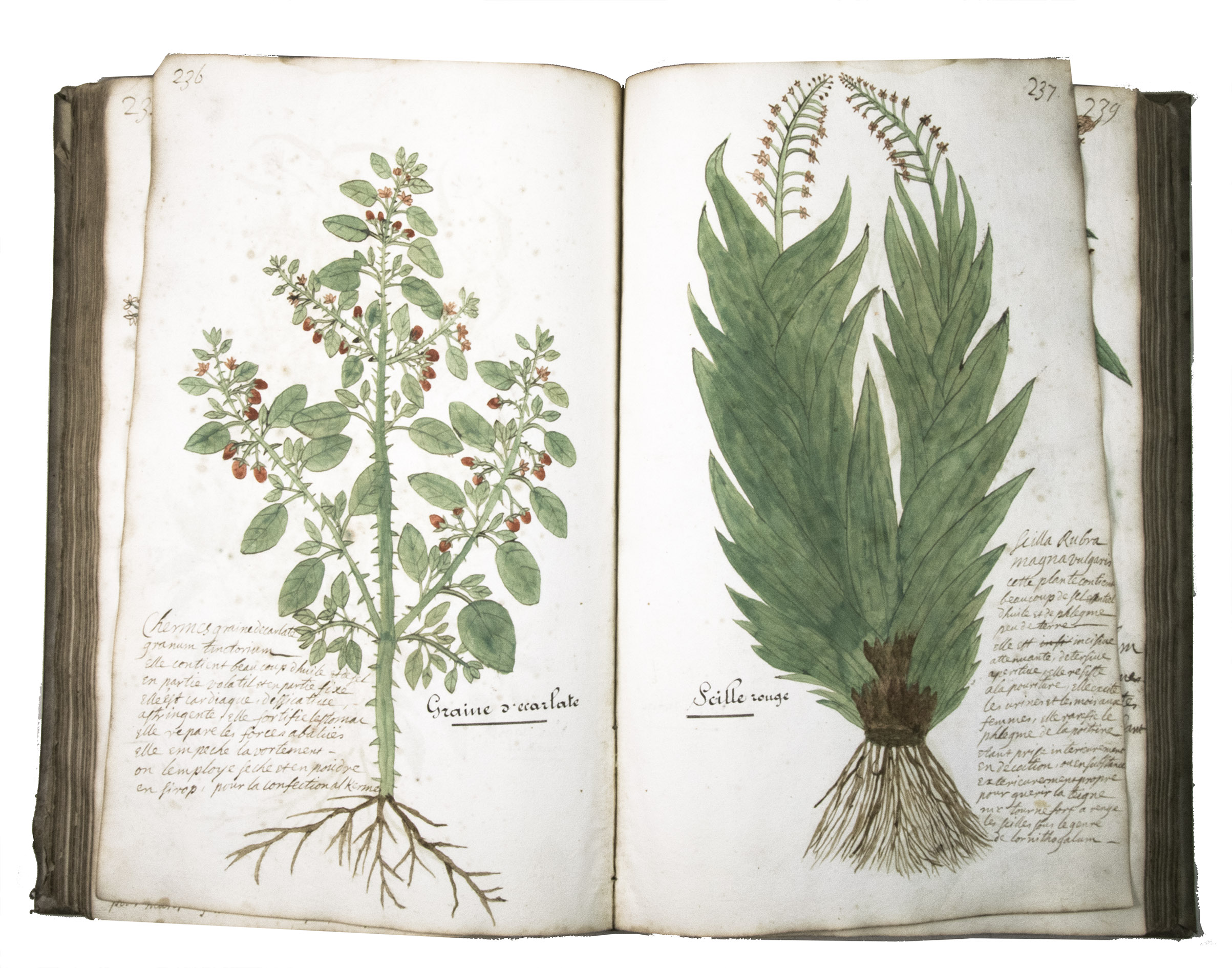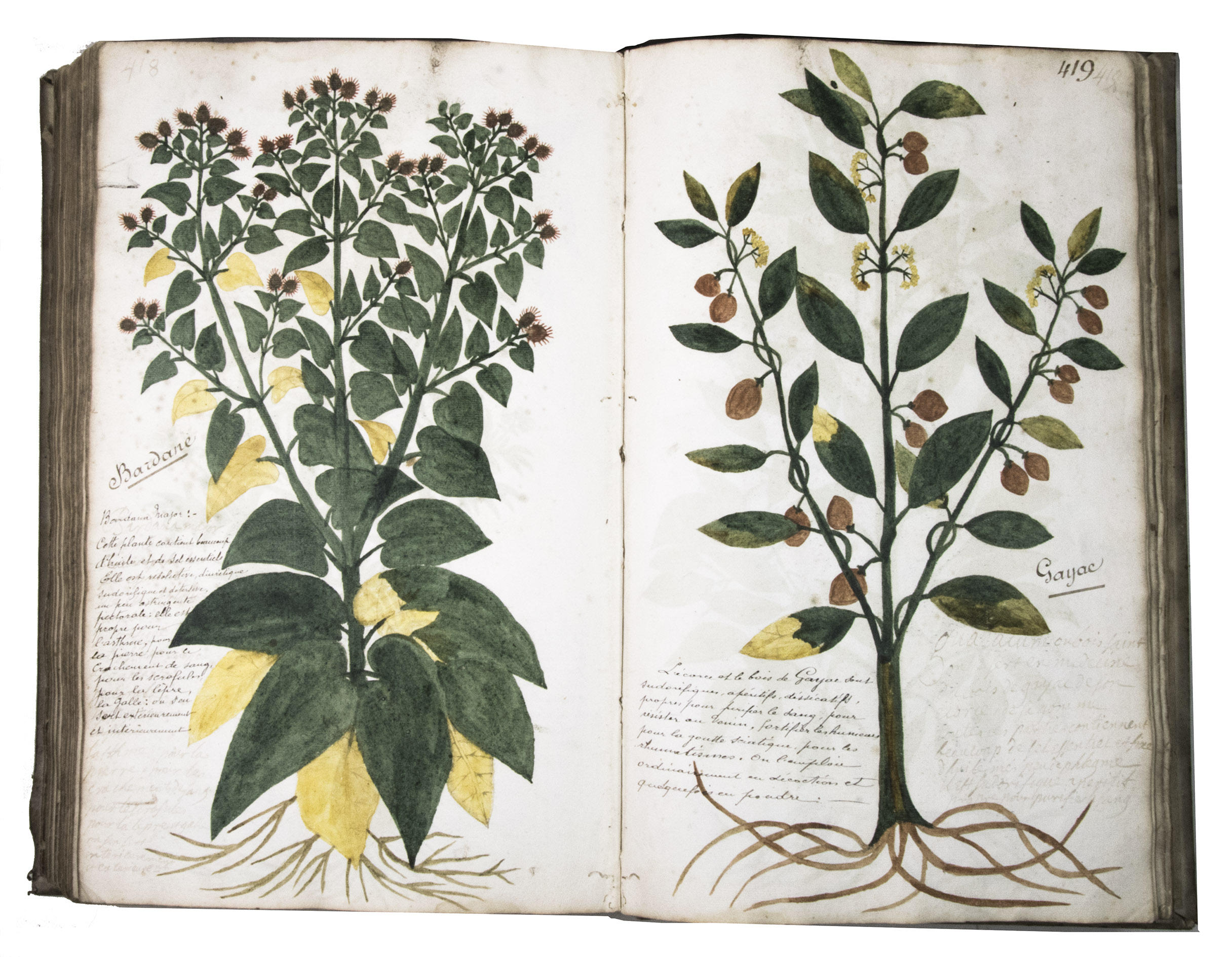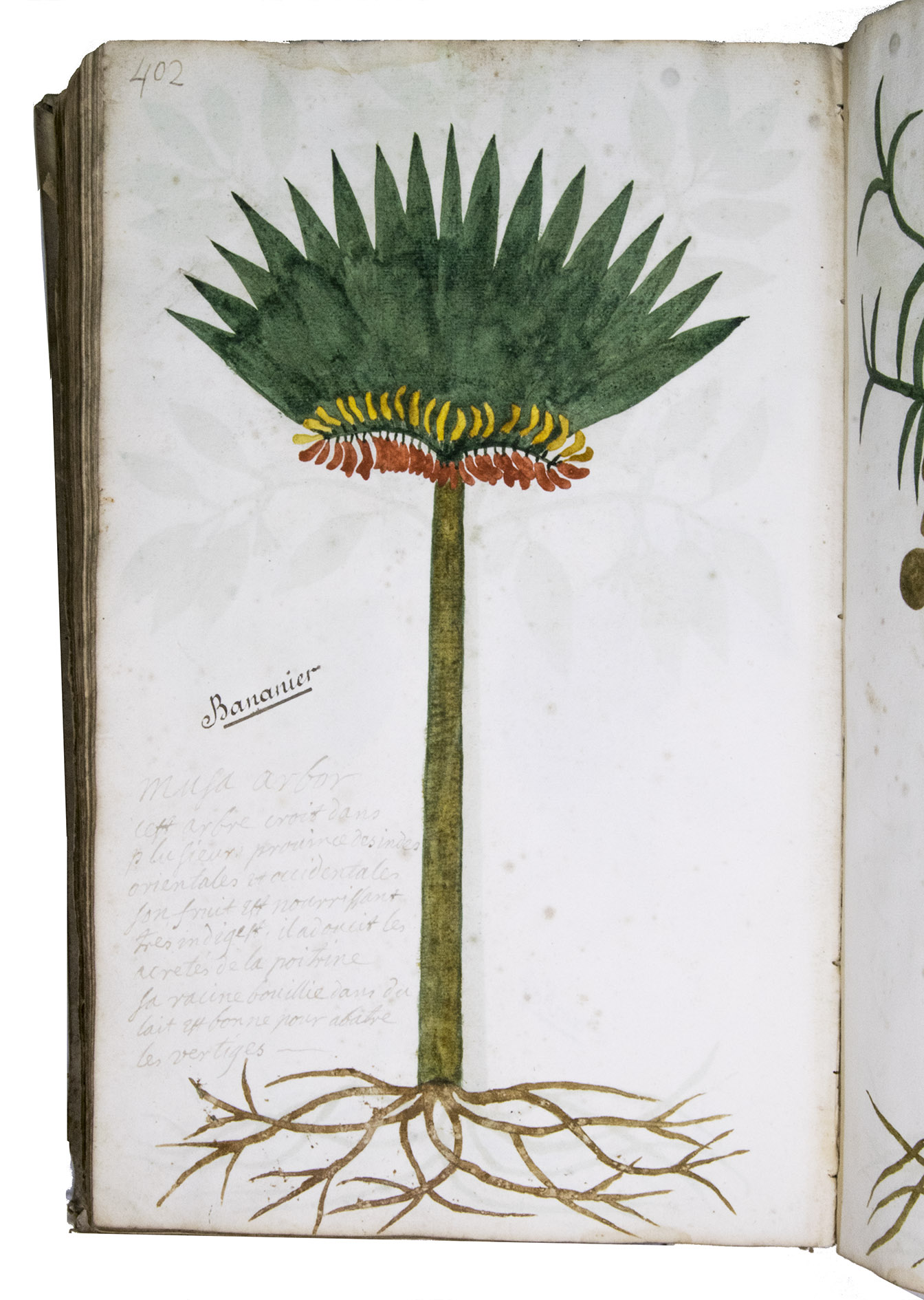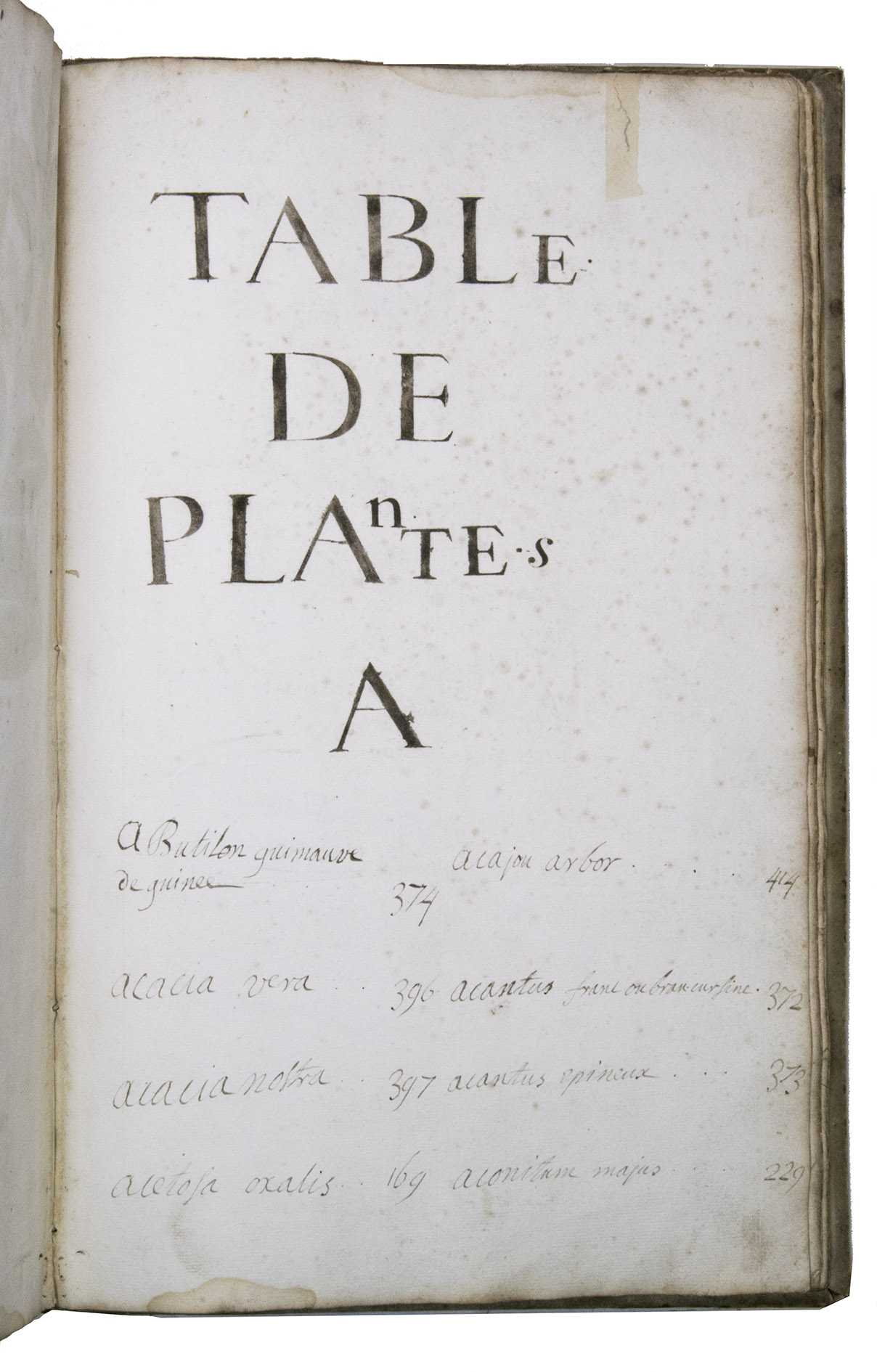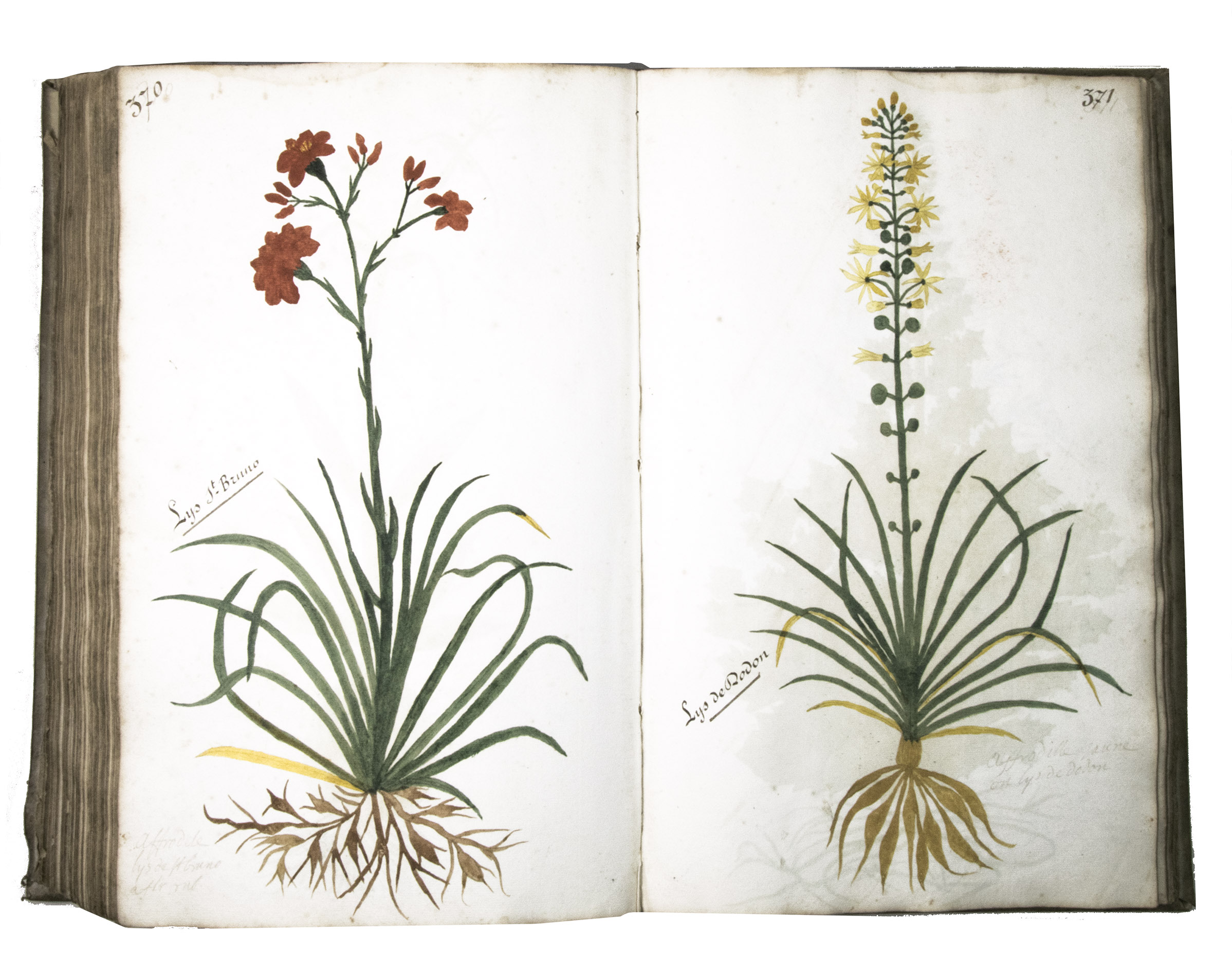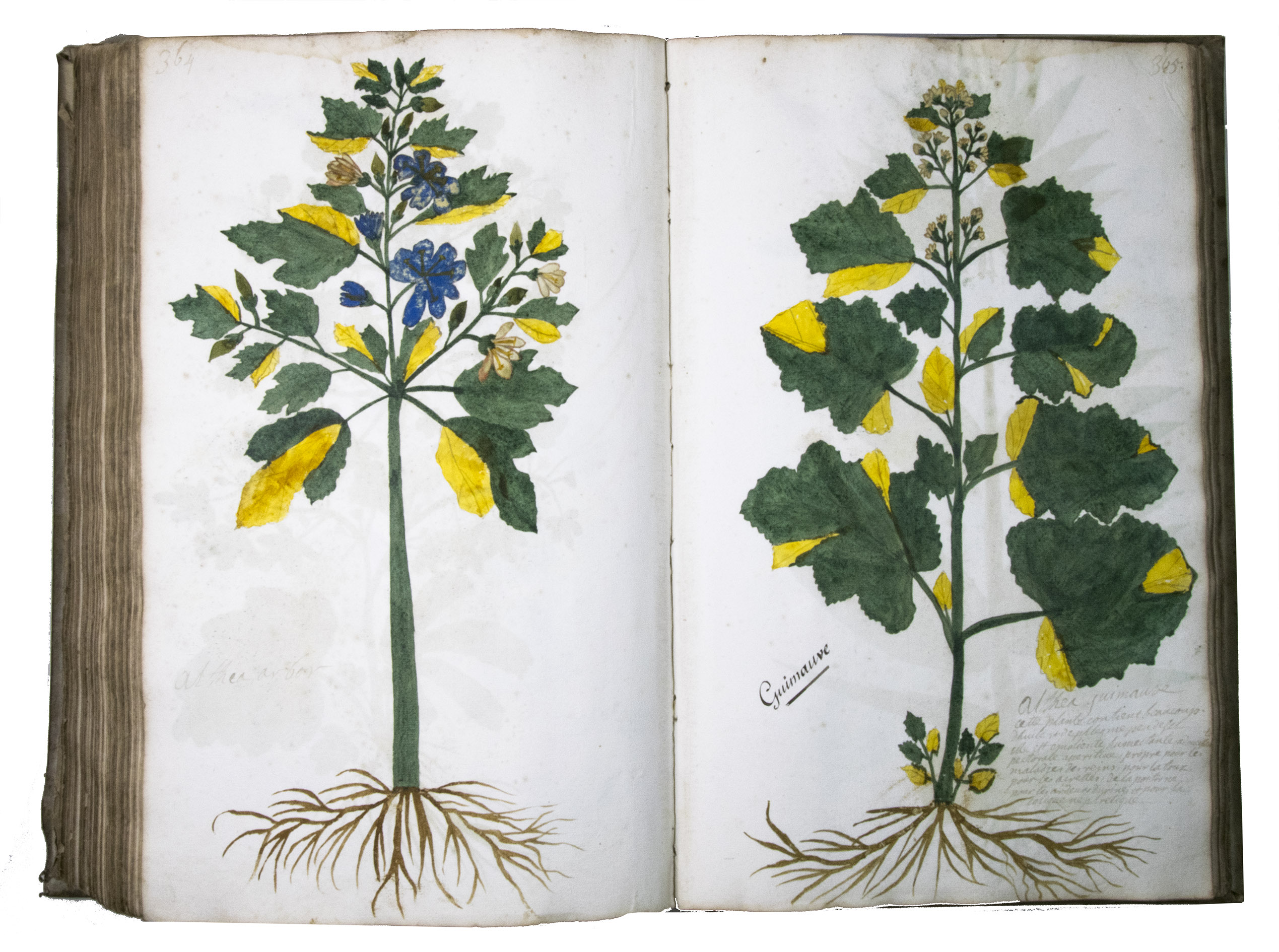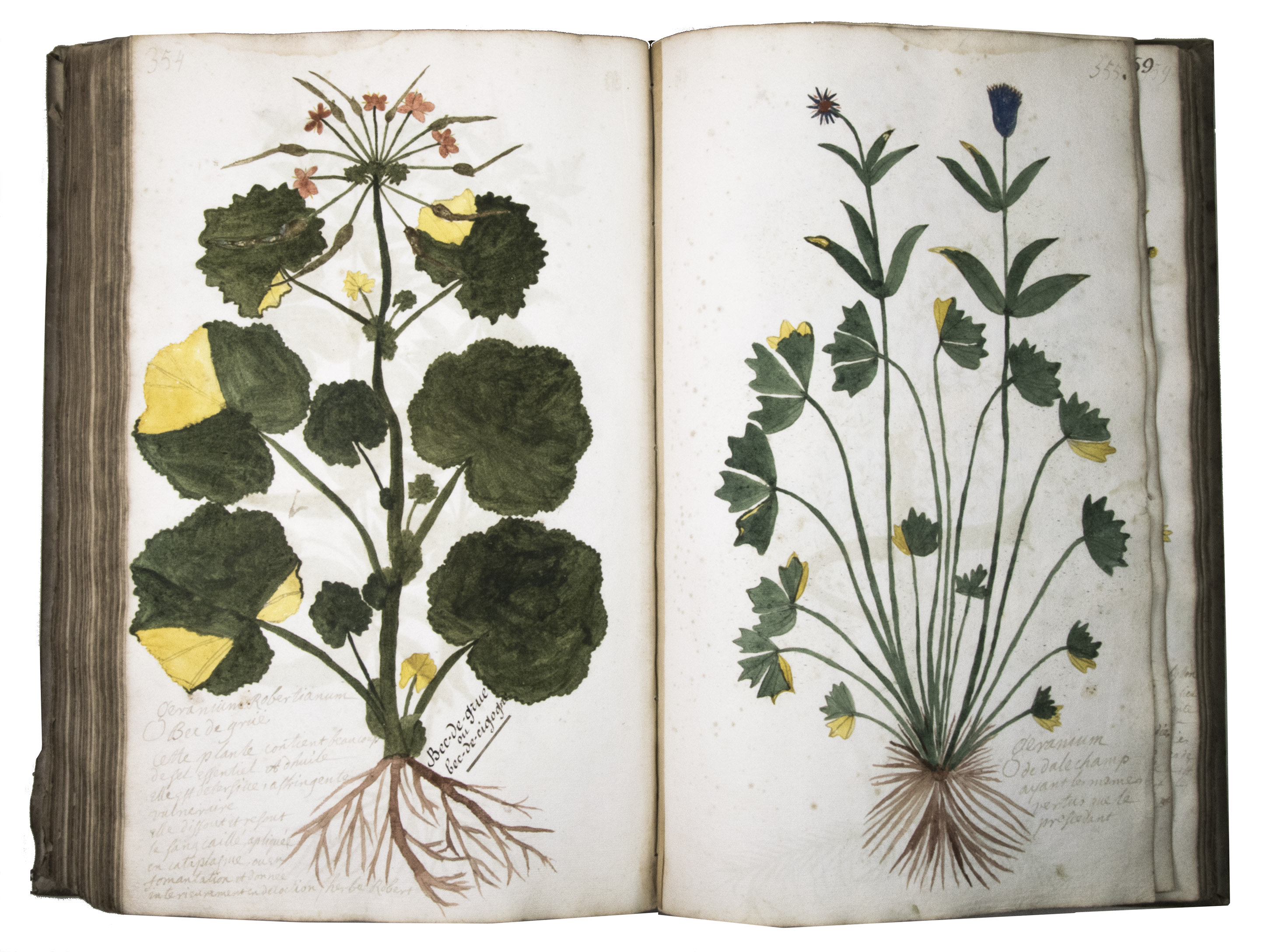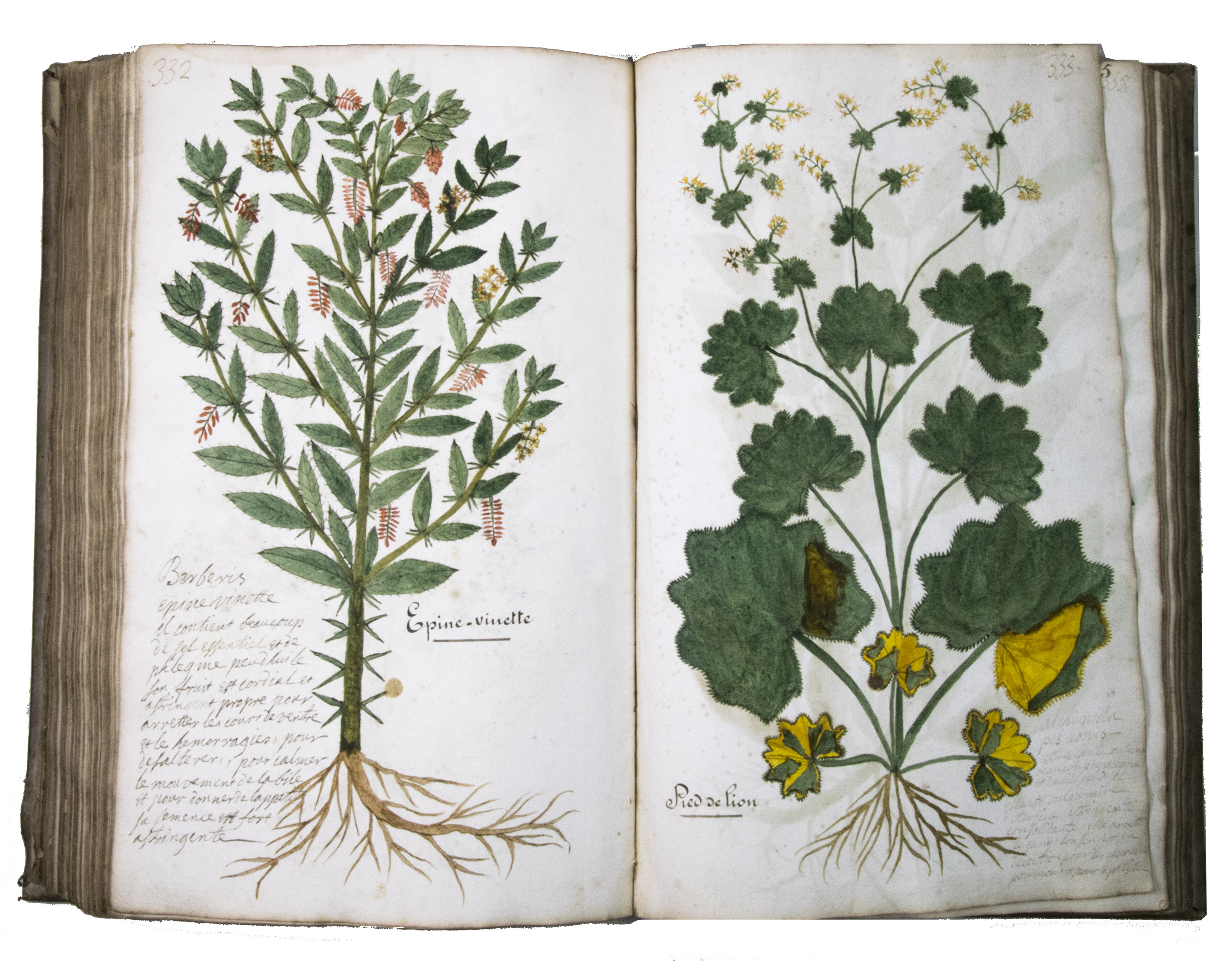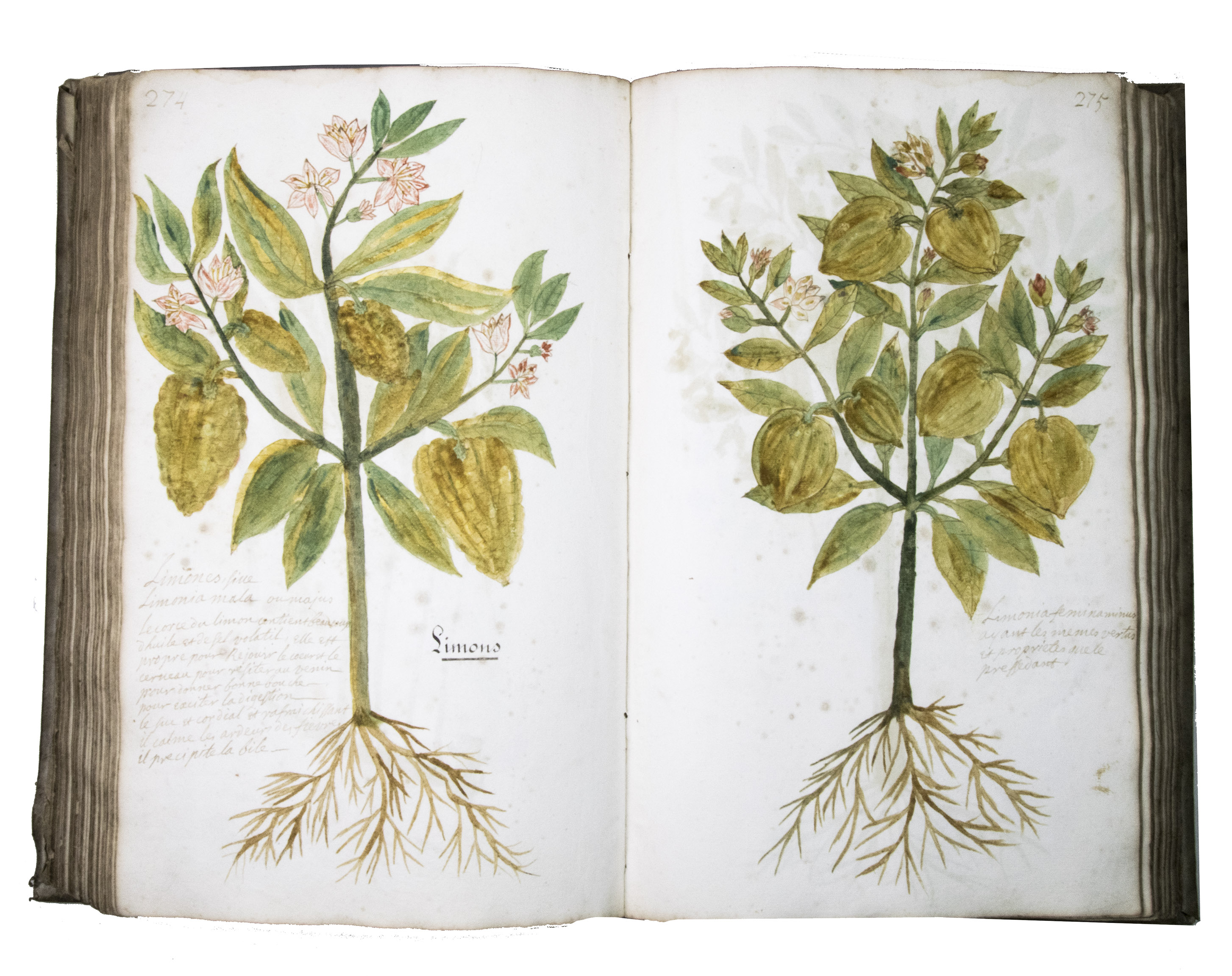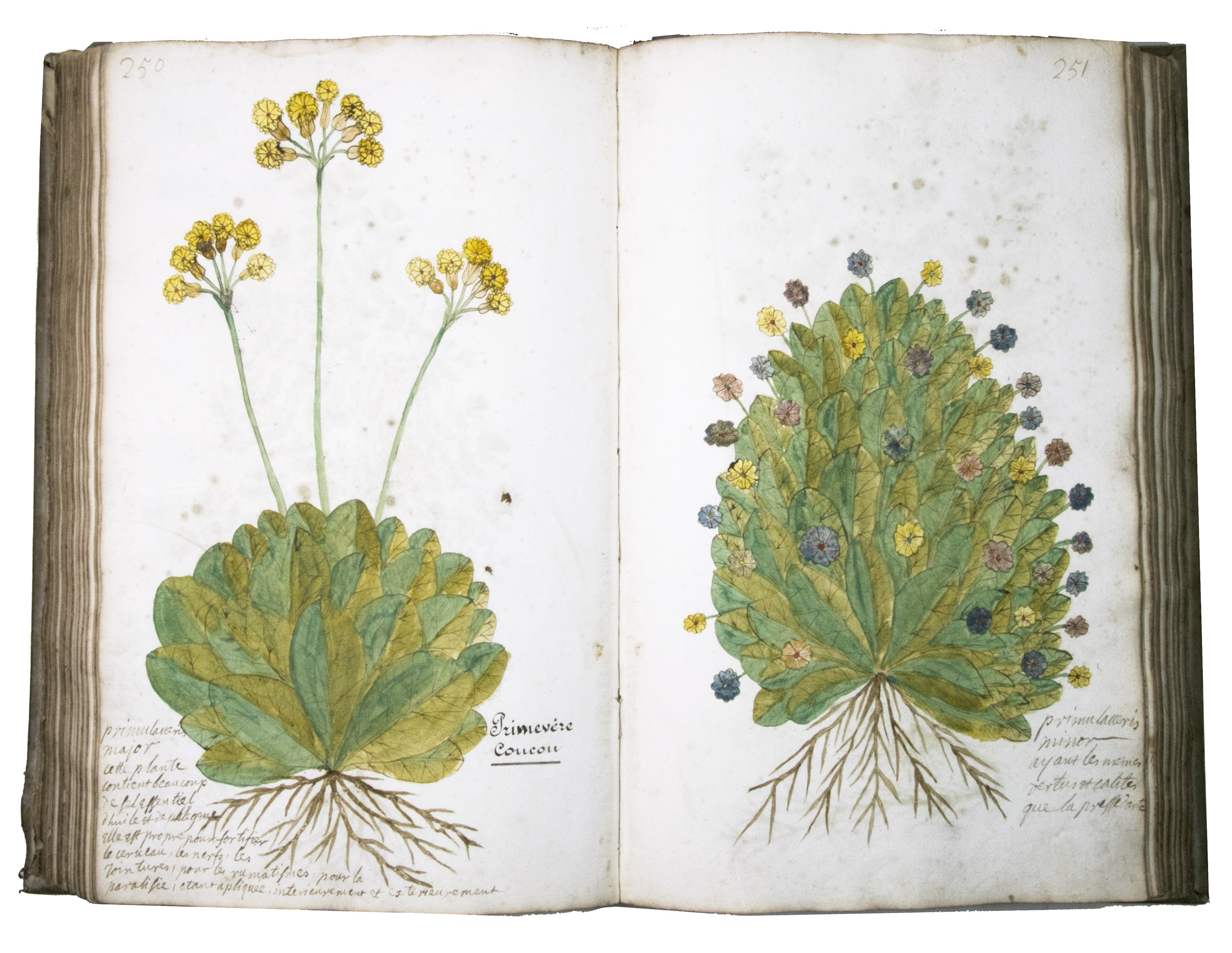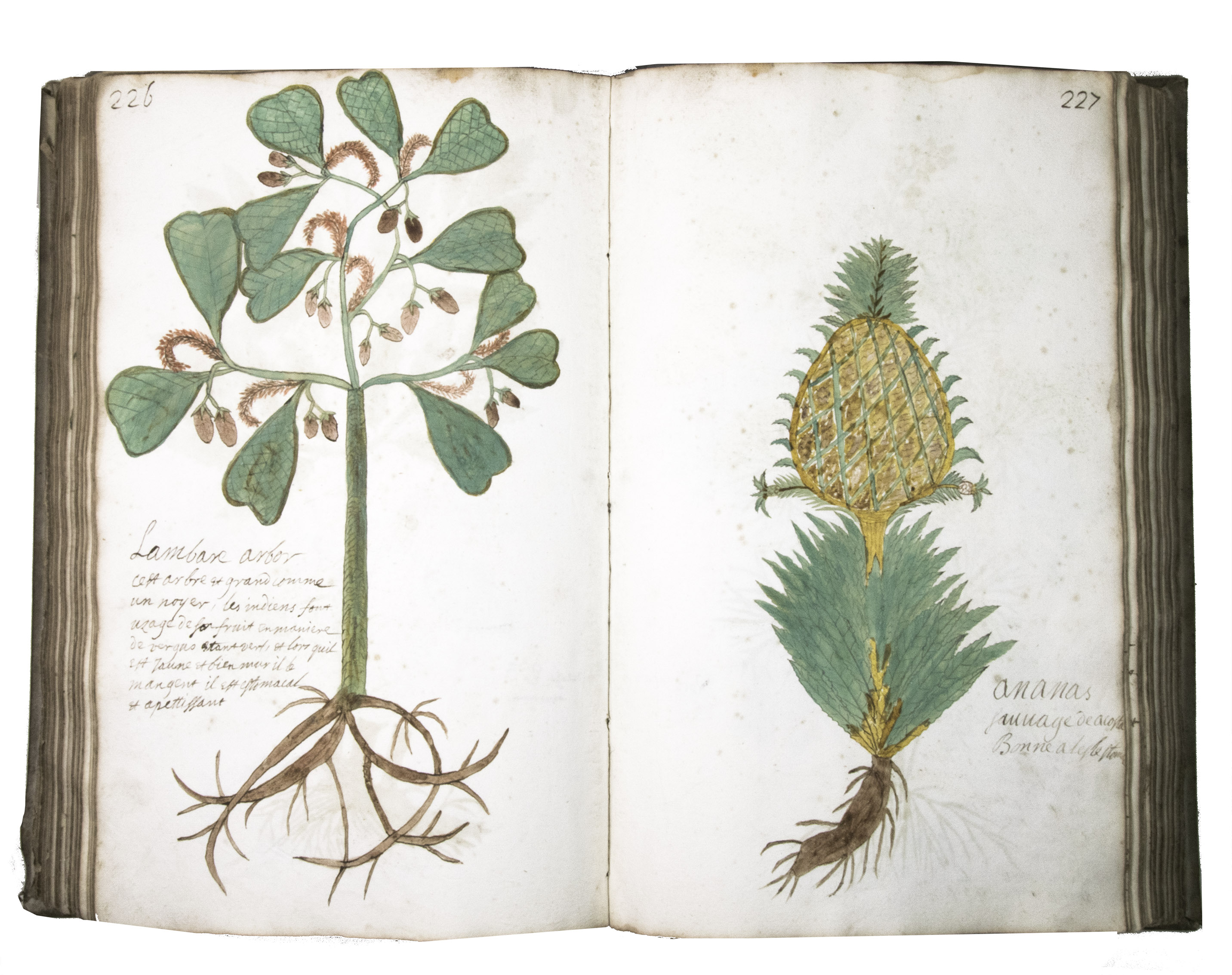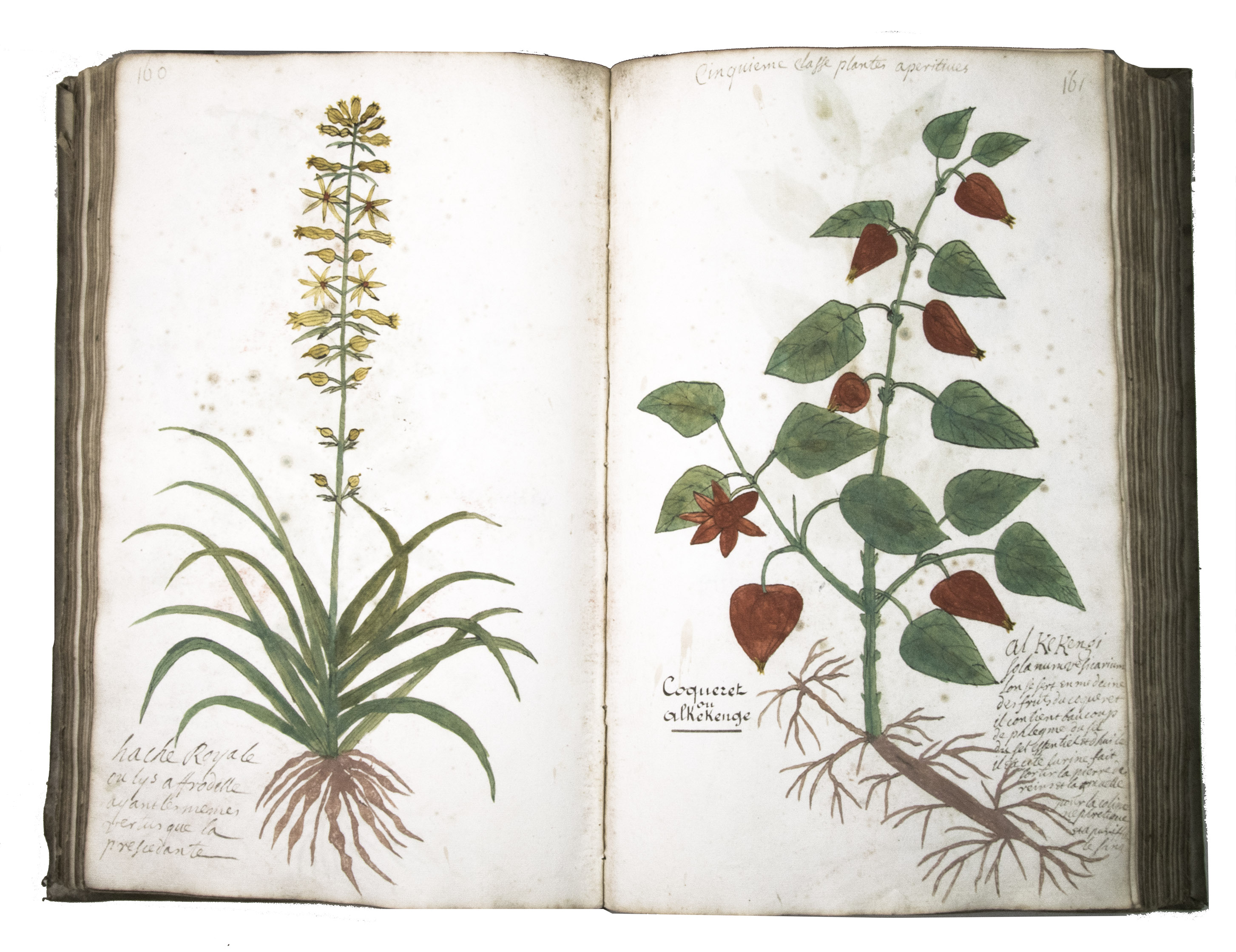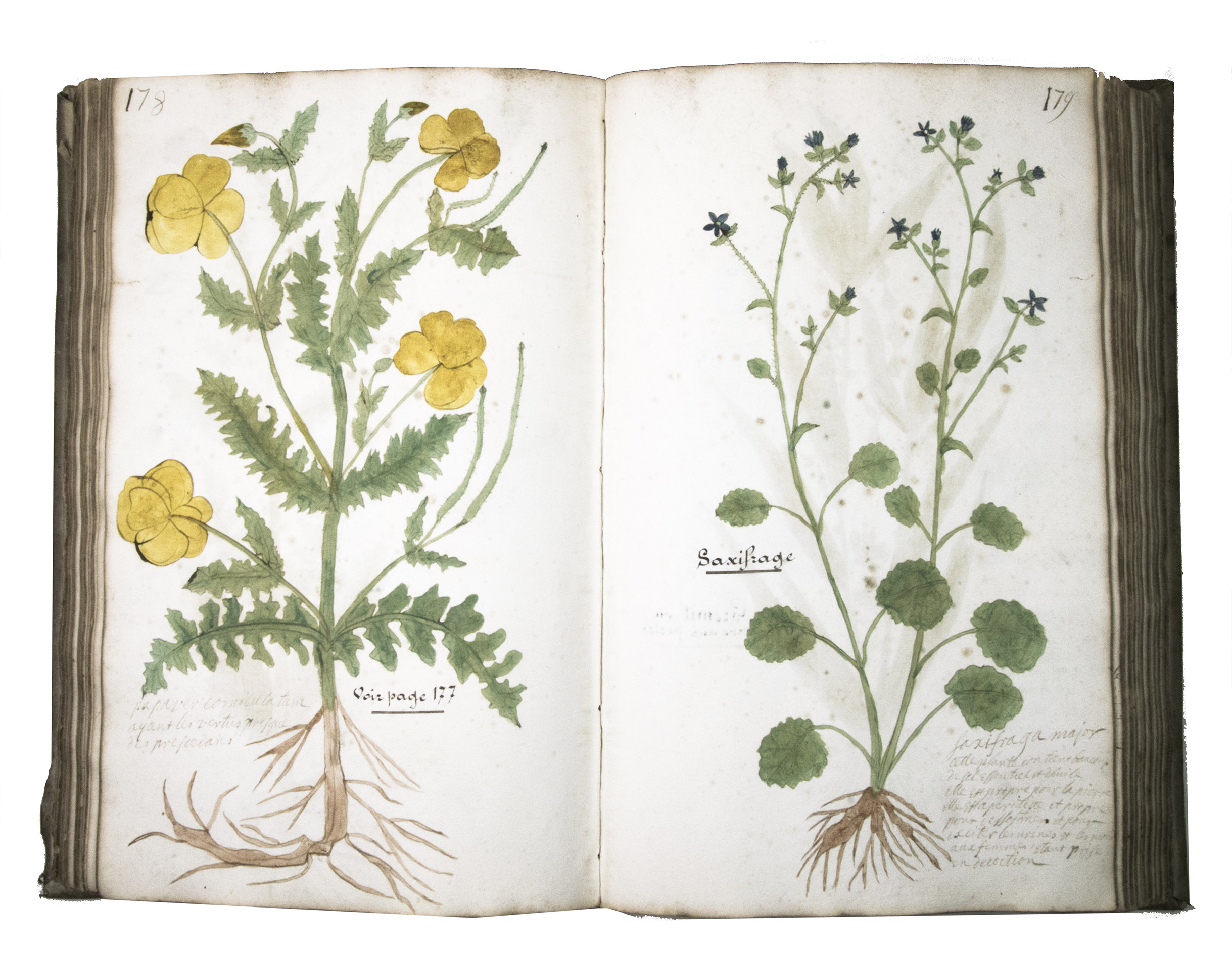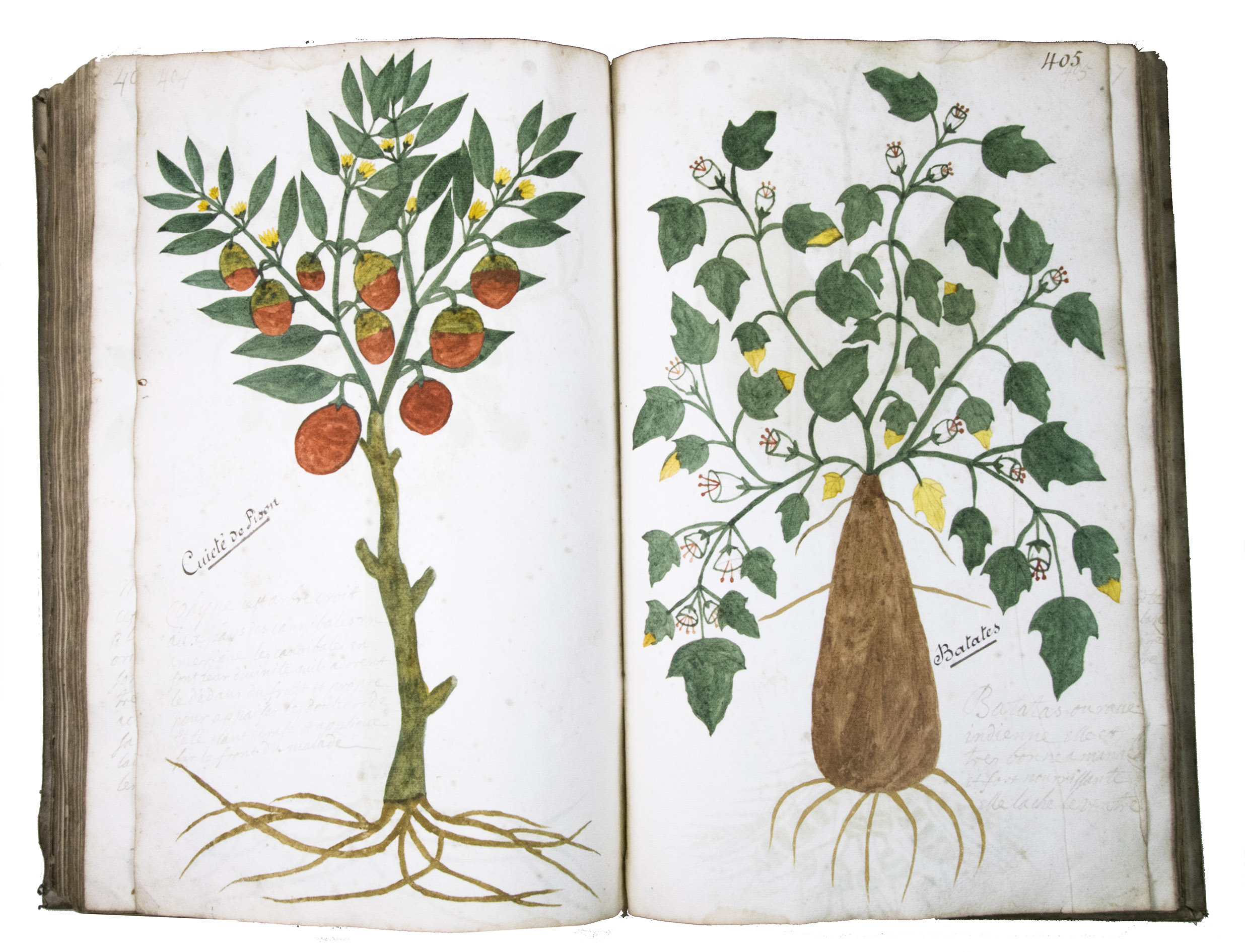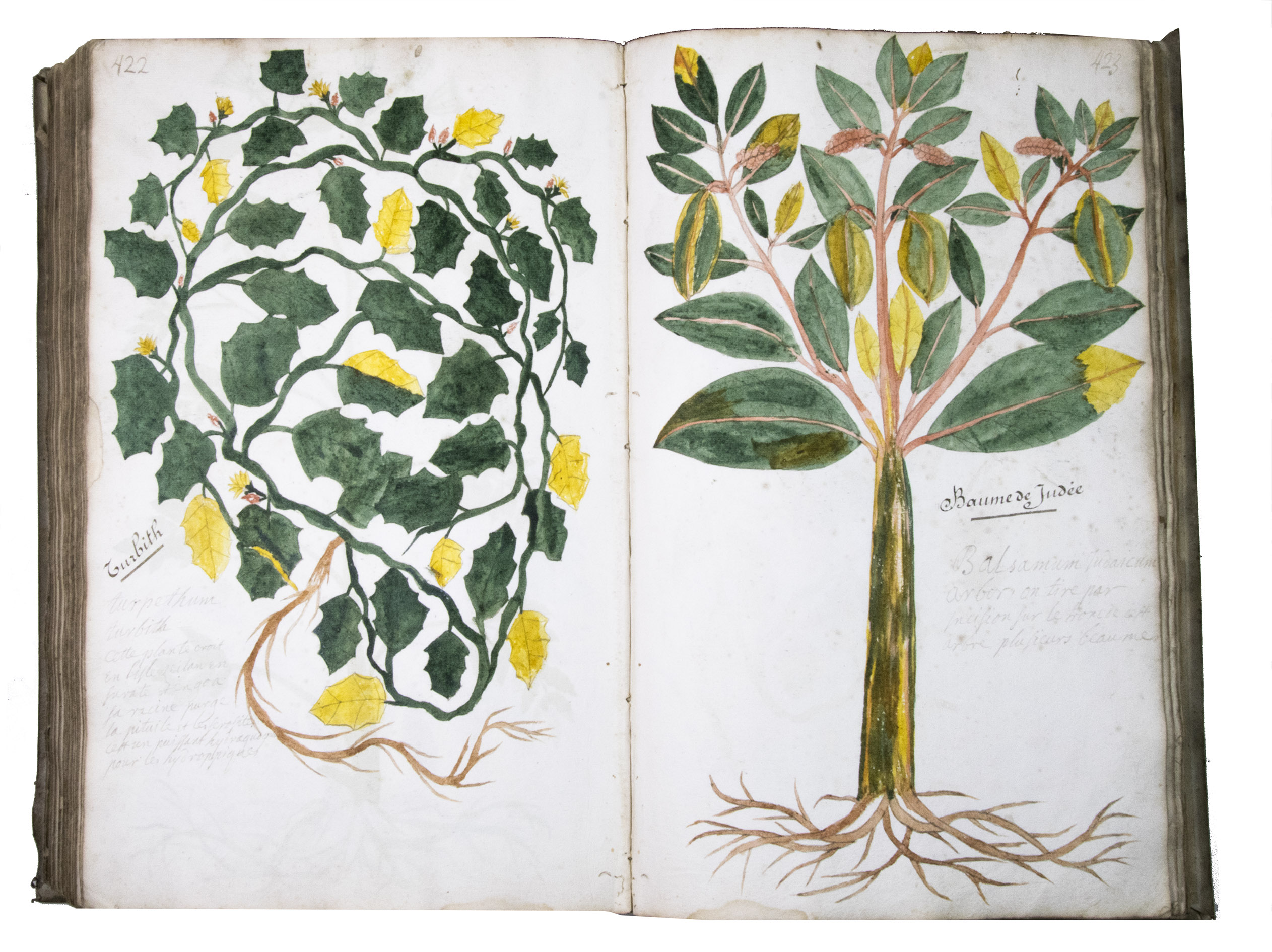[BOTANICAL MANUSCRIPT - FRIAR LUC DAVID].
[Drop title:] Traite des plantes universelles par figures au naturel par le frere Luc david Recollet, chirrugien oculiste ...
[France], 1742. Large folio (ca. 45 x 28 cm). With 423 botanical drawings in bright watercolour. Manuscript with French text (including Latin names of the depicted plants), written in an 18th-century cursive hand. Most leaves contain a "Strasbourg bend" watermark: a fleur-de-lis above a shield with a diagonal band and the countermark "L Laroche" (identical to Heawood 65, but erroneously listed by him as "I Laroche", date: 1718-1721). The French papermaker Léonard Laroche (1646-1721) was active in the French province of Angoumois (now Charente) in the period 1673-1721.
Contemporary vellum, later endpapers. [2], 423, [1 blank], [19] ll.
€ 58,000
Impressive French botanical manuscript, written in 1742 by the French Friar Luc David. As indicated in the title, he was an ophthalmic surgeon ("chirurgien oculiste"). The last part of his name, "Récollet", most probably refers to the order of the "Franciscan Recollects", a French reform branche of the Friars Minor, who were active as missionaries in various parts of the world, most notably in early French Canada. Friar Luc David is briefly described in the French periodical "Mercure de France ... Avril. 1730" (Paris, 1730, pp. 768-769) as coming from the province of Toulouse, from the "Communauté de Brive" in Bas Limousin. In December 1729, he visited the famous Fontevraud Abbey for the medical treatment of cancers and tumours, which were carried out successfully under difficult circumstances. In Poitou and Anjou, he repeated the same medical achievements, now also including eye surgeries.
This manuscript is illustrated with 423 watercolour drawings, all numbered in black ink in the top right or top left corner. They show various flowering plants, herbs, trees and their fruits, indigenous to France as well as exotic. Their names are supplied in French and Latin, followed by a brief description in French. In the 19th-century, another hand added the French botanical names in black ink (including three in purple ink) to most plants depicted and partly renumbered the pages in black ink.
The manuscript includes plants gathered from the New World, and based on some references - the author was possibly familiar with the works of the Portuguese physician and botanist Cristóbal Acosta (ca. 1525-ca. 1594), the French physician and botanist Jacques Daléchamps (1513-1588), the Flemish physician and botanist Mathias de Lobel (Lobelius, 1538-1616) and the Italian physician and botanist Pietro Andrea Gregorio Mattioli (1501-ca. 1578). The manuscript, including the drawings, is divided into 10 classes, each comprising 40 species, only the tenth and final class comprises 63 species. The author added 10 divisional titles, written in the head margin of respectively p. 1: premiere classe des plantes purgatives (pp. 1-40), p. 41: Seconde classe plantes bechyques [= béchiques] ou pectorales (pp. 41-80), p. 81: troisieme classe de plantes, Errhines ou sternutatoires et Salivantes (pp. 81-120), p. 121: quatrieme classe plantes histeriques (pp. 121-160), p. 161: Cinquieme classe plantes aperitives (pp. 161-200), of p. 201: Sixieme classe, plantes diaphoretiques et sudorifiques (pp. 201-240), p. 241: Septieme classe des plantes cephaliques (pp. 241-280), p. 281: huitieme classe, plantes febrifuges (pp. 281-320), p. 321: neuvieme classe, plantes alterantes et astringentes (pp. 321-360) and p. 361: Dixieme classe de plantes, seconde classe de plantes Emolientes (pp. 361-423). This classification largely corresponds to the structure of the early 18th-century botanical work Abrégé de lhistoire des plantes usuelles. Dans lequel on donne leurs noms differens, François & Latins ..., written by the French botanist Pierre Jean Baptiste Chomel (1671-1740). The first edition was published in 1712 (Paris, Charles Osmont) and reprinted many times until 1804. In 1739, a fifth revised edition appeared (comprising a supplement) and it is likely that this edition was consulted by Friar Luc David. In Chomel's work, the emphasis mainly lies on medicinal plants, and given the medical background of Friar Luc David, it is not surprising that he was particularly interested in the subject.
A complete list of contents is available upon request.
With an owner's stamp in purple ink ("Mme Grignard, Rue de Pessac, 19, Bordeaux") on the front pastedown and on the verso of the first flyleaf. The binding is stained and soiled, the foot of the spine is slightly damaged, both pastedowns and flyleaves have been renewed around 1900, the inner hinges strengthened with cloth. Most leaves are slightly water stained in the upper blank margin and are occasionally soiled, slightly frayed or torn in blank margins (which is partially repaired with translucent tape), the first leaf lacks a small part in the upper part of the leaf (with loss of a few words on verso) repaired with paper and translucent tape, occasionally slightly wormholed (in the lower blank margin of pp. 1-16, pp. 85-158 and pp. 411-423; in the upper margin of pp. 419-423 and the final index leaves). Cf. for the author: "Mercure de France ... Avril. 1730" (Paris, Guillaume Cavelier, a.o., 1730), pp. 768-769; for the watermark: Heawood 65; for the papermaker: Léonard Laroche; Céline Gendron, Le papier voyageur. Provenance: circulation et utilisation en Nouvelle-France au XVIIe siècle, pp. 116-118.
Related Subjects:
